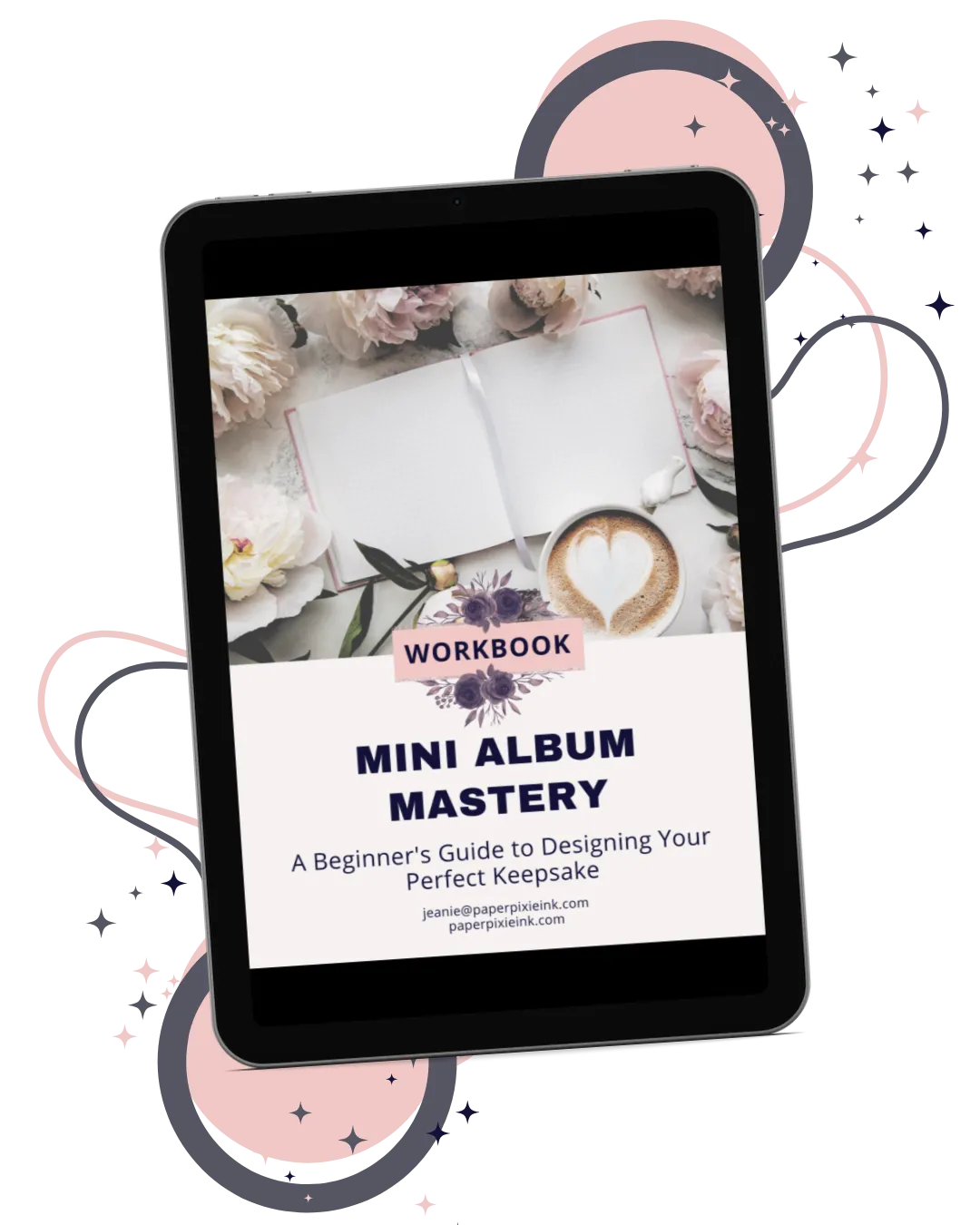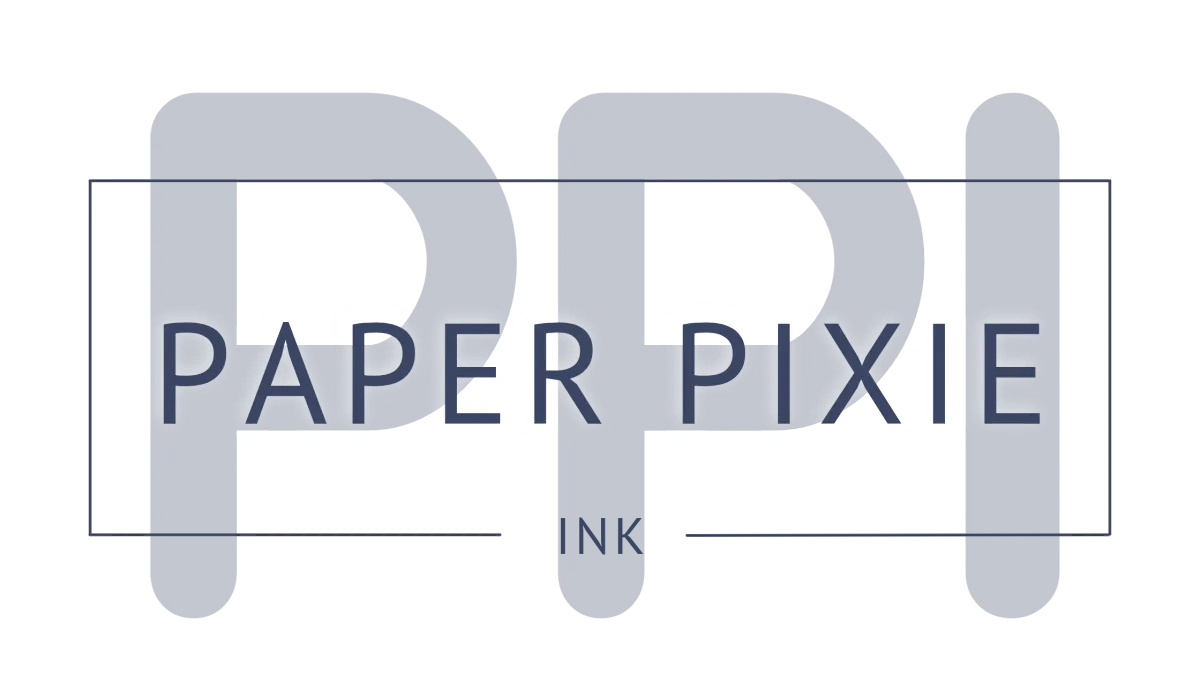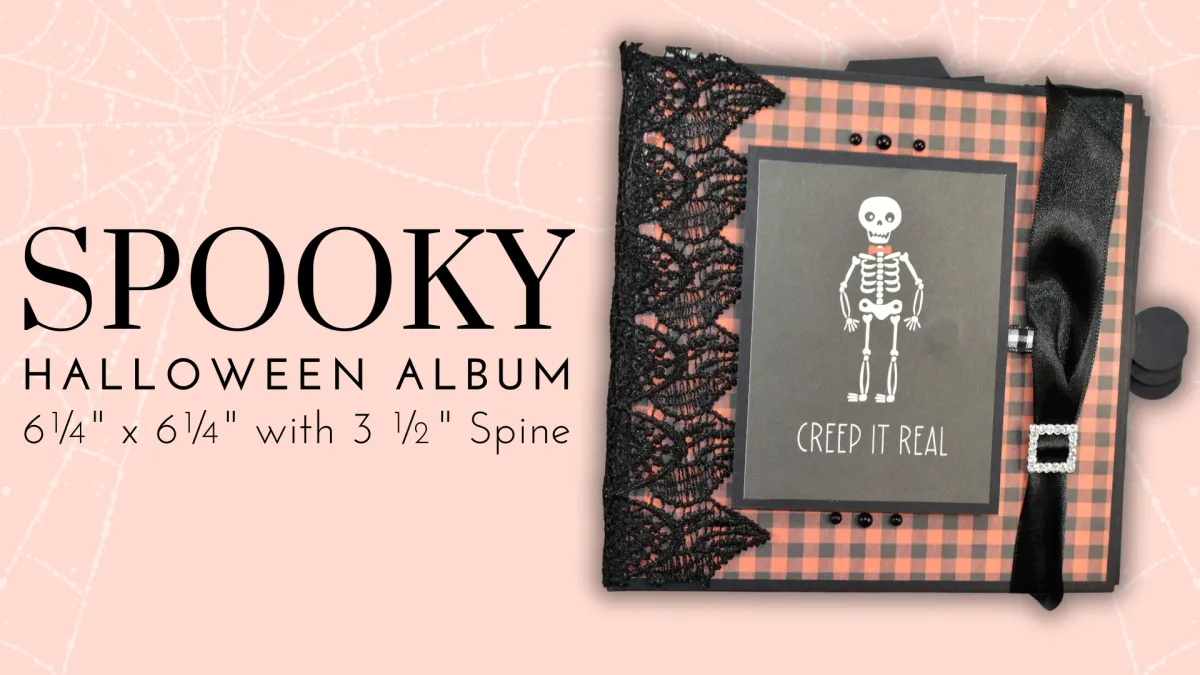BLOG
Explore a treasure trove of useful information, tips, and techniques to elevate your memory keeping & crafting skills on my blog.
Explore the World of Memory Keeping

Mini Album & Scrapbooking Glossary of Terms
Every masterpiece starts with a memory, and every memory deserves to be preserved.” - Anonymous
Mini Album & Scrapbooking Glossary of Terms
Acid-Free: Referring to materials, such as papers, adhesives, and embellishments, that are pH-neutral or have a low acid content. Acid-free materials are essential in scrapbooking and mini album making because they do not deteriorate or yellow over time, ensuring the long-term preservation and protection of photographs, memorabilia, and other precious items.
Acrylic Paint: A fast-drying, water-based paint that can be used to add color, texture, or artistic effects to scrapbook pages or mini albums. It is often used with brushes, sponges, or other applicators.
Adhesive: Various types of glue, tape, or adhesive dots used to stick photos, papers, and embellishments in place.
Alphabets/Stickers: Self-adhesive letters, numbers, or words used to create titles, headings, or captions on scrapbook pages or mini albums.
Archival-Safe: Referring to materials that are acid-free, lignin-free, and do not deteriorate over time, ensuring the long-term preservation of photographs and memories in scrapbook pages or mini albums.
Brads: Decorative fasteners with two prongs that are used to hold layers of paper or cardstock together, adding visual interest and dimension to scrapbook pages or mini albums.
Burnish: The act of using a bone folder or a similar tool to smooth out wrinkles, creases, or air bubbles when adhering paper or cardstock, ensuring a flat and clean finish.
Burnish: In the context of scrapbooking and paper crafting, burnishing refers to the process of applying pressure to a surface, usually with a tool like a bone folder or a burnishing tool (teflon), in order to create a smooth and polished finish.
When working with paper or cardstock in scrapbooking or mini album making, burnishing is often used to remove air bubbles, wrinkles, or to ensure secure adhesion of adhesive materials. It helps to create a professional and neat appearance by flattening and smoothing the paper or cardstock, resulting in a clean and cohesive finished project.
To burnish, simply apply firm and even pressure along the surface using a burnishing tool or a bone folder, moving from the center towards the edges. This technique is commonly used when adhering papers, vellum, or other materials together, ensuring a seamless and professional look in your scrapbook pages or mini albums.
Cardstock: Heavyweight paper or card material used as a base for scrapbook pages or mini album covers.
Cascading Folds: Folding or accordion-style sections that create a cascading effect when unfolded, revealing multiple layers or surfaces for displaying photos or designs.
Chipboard: A sturdy and thick type of cardboard often used for creating album covers, pages, or embellishments in scrapbooking or mini album making.
Chipboard Letters: Pre-cut, thick letters or alphabets made from chipboard material, often used for creating titles or headings on scrapbook pages or mini albums.
Crop: A gathering of scrapbookers or crafters where they work on their projects together, share ideas, and socialize.
Crop: The act of trimming or cutting out a portion of a photograph to remove unwanted or unnecessary elements, focus on a specific subject, or improve the composition. Cropping is a common technique used in scrapbooking and photo editing to enhance the visual impact of a photo and fit it into a specific layout or design.
Decorative Paper: Patterned paper featuring various designs, patterns, and motifs, used as a background or accent in scrapbooking or mini album projects.
Decoupage: A technique that involves adhering layers of paper or fabric cutouts to surfaces using a special glue or medium, creating a collage-like effect in scrapbooking or mini album projects.
Die-cutting: Using a die-cutting machine or manual dies to create precise shapes or patterns from paper or cardstock.
Die-Cutting Machine: A tool or device used to cut out intricate shapes, designs, or patterns from paper, cardstock, or other materials using dies or templates.
Distressing: Adding an aged or weathered look to paper or cardstock by using techniques like sanding, inking, or tearing.
Distressing Tool: A tool or instrument, such as a sanding block or distressing ink applicator, used to intentionally distress or age the edges of paper or cardstock in scrapbooking or mini album projects.
Distress Ink: A type of dye ink with a slightly thicker consistency, often used for adding an aged, vintage, or weathered effect to papers or embellishments in scrapbooking or mini album projects.
Distress Oxide: A type of ink pad that combines dye and pigment inks to create a unique chalky, oxidized effect when applied to paper or cardstock. It is often used for background techniques or adding an aged appearance.
Doodling: The act of drawing or sketching freehand designs, patterns, or decorative elements directly onto scrapbook pages or mini albums to add a personal and whimsical touch.
Embellishments: Decorative elements such as stickers, die-cuts, ribbons, brads, or buttons used to enhance scrapbook pages or mini albums.
Embossing: Creating raised or textured designs on paper or cardstock using heat, special powders, and embossing tools.
Embroidery: The art of stitching or sewing decorative designs, patterns, or accents onto fabric, paper, or cardstock to add texture and visual interest to scrapbook pages or mini albums.
Embroidery Floss: A thread typically used in embroidery that can also be used to add stitched accents or borders to scrapbook pages or mini albums.
Envelope Pages: Special pages or pockets designed to hold small items, tags, or ephemera within scrapbooks or mini albums, providing additional storage and interactive elements.
Ephemera: Vintage or collectible items such as tickets, postcards, tags, or labels that add a nostalgic touch to scrapbook pages or mini albums.
Ephemera Collection: A curated assortment of vintage-inspired or theme-specific paper elements, including images, die-cuts, tags, and labels, used to enhance the design and storytelling in scrapbook pages or mini albums.
Ephemera Pack: Pre-packaged collections of assorted vintage or themed paper elements, such as tickets, tags, labels, and journaling cards, used for adding nostalgic touches to scrapbook pages or mini albums.
Eyelets: Small metal fastener with a hole in the center, used to reinforce holes or to add decorative accents to scrapbook pages or mini albums.
Flaps: Foldable sections attached to pages that can be lifted or flipped to reveal hidden photos, messages, or designs.
Flip Book: A type of mini album where pages are designed to be flipped or turned, revealing hidden photos, messages, or interactive elements.
Flip-Out Panels: Additional panels or extensions attached to a page that can be flipped open or folded out to reveal more photos, journaling, or decorative elements.
Flip-Up Pages: Pages with hinged sections that can be flipped up or lifted to reveal hidden photos, journaling, or interactive elements.
Flocking: The process of applying fuzzy or velvet-like fibers to surfaces, such as chipboard shapes or die-cuts, using adhesive or special flocking powder to create a textured effect in scrapbooking or mini album making.
Foam Tape/Dots: Double-sided adhesive foam strips or dots used to add dimension and raise elements off the page in scrapbooking or mini album projects.
Fussy Cutting: The technique of meticulously cutting out detailed images or designs from patterned paper or cardstock, often using small scissors or craft knives.
Gelatos: Creamy, water-soluble pigment sticks used for applying color, shading, or highlighting effects to paper or cardstock in scrapbooking or mini album projects.
Gel Medium: A thick, transparent substance used in mixed media projects to create texture, adhere elements, or seal surfaces.
Gesso: A primer or base coat applied to surfaces such as chipboard or canvas to create a smooth and paintable surface in mixed media projects.
Heat Embossing: A technique that involves stamping an image or design with embossing ink, sprinkling embossing powder over it, and then heating it with a heat gun to create a raised, glossy effect.
Hidden Pockets: Concealed pockets or envelopes within pages where photos, journaling cards, or memorabilia can be tucked away and discovered when the pocket is opened.
Interactive Album: A type of album or scrapbook that incorporates various interactive elements, mechanisms, or surprises to engage the viewer and create an interactive experience.
Journaling: The practice of adding handwritten or printed notes, captions, or stories to document memories on scrapbook pages or mini albums.
Layout: A single page or spread in a scrapbook or mini album that combines photos, embellishments, and journaling.
Masking: The process of covering certain areas of a scrapbook page or mini album with tape, stencils, or masks to protect them while applying ink, paint, or other media to create layered effects.
Memorabilia: Keepsakes or mementos, such as ticket stubs, souvenirs, programs or trinkets, incorporated into scrapbook pages or mini albums.
Mini Album: A smaller-sized album, typically handmade, used to store and display photos or memories.
Mixed Media: An artistic approach that combines various materials and techniques, such as paints, inks, stencils, texture paste, and collage elements, to create unique and textured effects on scrapbook pages or mini albums.
Page Protector: A clear plastic sleeve or pocket that holds a scrapbook page or mini album layout, protecting it from damage.
Paper Trimmers: Tools used to cut and trim paper or cardstock to specific sizes or shapes. Common types include guillotine trimmers, rotary trimmers, or portable paper trimmers.
Patterned Paper: Decorative paper featuring various designs, patterns, and motifs, used as a background or accent in scrapbooking or mini album projects.
Photo Mat: A border or frame made from cardstock or patterned paper that highlights and enhances a photograph.
Pocket Letters: A form of pen-pal correspondence where decorated pocket pages are filled with small gifts, notes, and goodies to be sent to other crafters, combining scrapbooking with creative communication.
Pocket Pages: Clear plastic or photo sleeves with various pocket configurations that allow for easy insertion of photos, cards, or memorabilia into scrapbook albums, providing a simple and organized approach to documenting memories
Pocket Pages: Pages or pockets with openings where photos, tags, or other elements can be inserted or stored, providing an interactive way to access additional content.
Pop-Up Elements: Three-dimensional elements or structures that pop up when a page is opened, adding depth and visual interest to the album.
Project Kit: A packaged collection of coordinated papers, embellishments, and instructions designed to create a specific scrapbook layout or mini album, providing convenience and inspiration for crafters.
Project Life: A popular pocket-style scrapbooking system that involves using pre-designed pocket page protectors to easily organize and showcase photos, journaling cards, and memorabilia in a structured manner.
Pull-Outs: Pages or elements within an album that can be pulled out or extended to reveal hidden photos, journaling, or additional content.
Punches: Tools used to create decorative edges, shapes, or designs in paper or cardstock.
Ribbon: Decorative fabric or satin tape used to add texture, color, or embellishment to scrapbook pages or mini albums.
Scrapbooking: The art of preserving and showcasing photographs and memories in an aesthetically pleasing way.
Shaker Elements: Transparent pockets or compartments filled with sequins, beads, or other small objects that create a shaking or floating effect when the album is moved or shaken.
Slider Mechanism: A mechanism that allows an element, such as a photo or embellishment, to slide horizontally or vertically within a page, revealing different elements or hiding them.
Stamping: The process of applying inked designs or images onto paper or cardstock using rubber or clear stamps. This can be done with various types of inks, including dye inks, pigment inks, or archival inks.
Stitching: The technique of sewing or stitching paper, fabric, or other materials onto scrapbook pages or mini albums for decorative purposes or to add a handmade look.
Theme: A specific subject, event, or occasion that provides a cohesive focus for a scrapbook or mini album.
Tuck Spots: Small tucked-away areas on a page where items like small photos, journaling cards, or ephemera can be inserted or hidden, adding an interactive and dynamic element to the album.
Vellum: A translucent, lightweight paper that can be used to add a soft, delicate, or ethereal touch to scrapbook pages or mini albums. It is often used for overlays or to create layered effects.
Washi Tape: Decorative adhesive tape typically made of Japanese rice paper, available in various colors, patterns, and widths. Washi tape is commonly used to add borders, accents, or to adhere photos in scrapbooking or mini album projects.
Watercolor: A painting technique using water-soluble pigments that can be applied to paper or cardstock to create artistic backgrounds, washes, or artistic effects in scrapbooking or mini album making.
Waterfall Pages: A series of connected pages or strips that cascade or "waterfall" down (or up) when opened, creating multiple surfaces for displaying photos or journaling.
I hope you found this information valuable in your creative journey.
Recommended Base Album Supplies
Recommended Tools
SUGGESTED COURSE(S)

FREE DOWNLOAD
Master the Art of Mini Albums with My Free Workbook
Design Your Perfect Keepsake with Expert Guidance
Ready to dive into the captivating world of mini albums? Sign up for my free workbook, 'Mini Album Mastery: A Beginner's Guide to Designing Your Perfect Keepsake.'
Get started on your mini album journey today!
© Copyright 2024 Paper Pixie Ink


